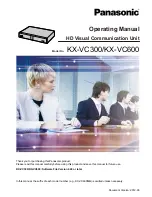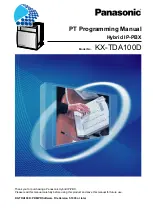
13
CHAPTER 3
MAINTENANCE AND WARRANTY INFORMATION
3.
INTRODUCTION.
This chapter provides procedures for maintenance of the TCR-HHR-05 Tactical Handheld Radio
Communications Set.
3.1.
Preventive Maintenance.
All maintenance procedures are in the subsequent sections.
3.1.1.
Dirt and Dust.
All external components to the TCR-HHR-05 can be cleaned with a water dampened
non-abrasive cloth and allowed to air dry or wipe dry with a clean dry non-abrasive cloth.
3.1.2.
Oil and Grease.
All external components of the TCR-HHR-05 can be cleaned with a mild soap/water solution
using a non-abrasive cloth. Rinse with water dampened non-abrasive cloth and allowed to air dry
or wipe dry with a clean dry non-abrasive cloth.
3.1.3.
Visual Inspections.
Regular inspection of all cables should be performed to ensure that they are free from damage
(i.e., cuts or kinks in outer cable jacket, bent pins, or corrosion). Ensure that the fan assembly
under the case is free from obstructions that there are no signs of damage to the protective
stainless steel mesh.
3.1.4.
Self-Test.
Regularly check the TCR-HHR-05 for faults. There is no built in system self-test; however, the
system components can be checked individually to ensure they meet all their specifications.
3.1.5.
Power Out Checks.
It is recommended that power out should be checked on the TCR-MBA-50 WB power amplifier
occasionally to prevent any performance degradation to the TCR-HHR-05 Tactical Handheld
Radio Communications Set.
a. Hook up a watt meter in line with the external antenna port under test.
b. Turn the TCR-HHR-05 and watt meter on and place the watt meter in FWD power.
c. Setup the radio for the net under test (RAD1-RAD4) for a minimum of 2 watts (5
watts recommended), FM at 300 MHz and the PA for the appropriate mode under test
(LOS, SAT, WB) key up RAD2 and verify that the watt meter reads the power level
specified in Table 3-1.
e. Turn off and disconnect the watt meter and return the TCR-HHR-05 to normal
configuration.



































